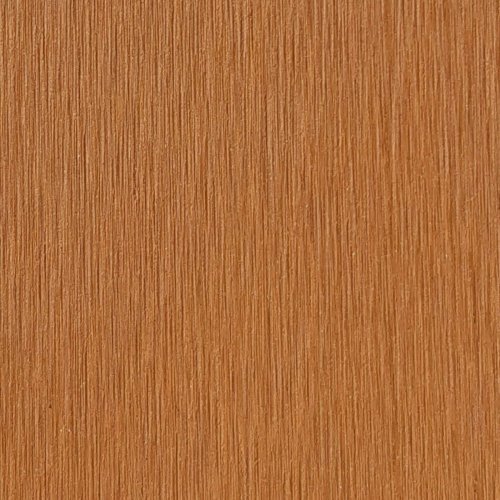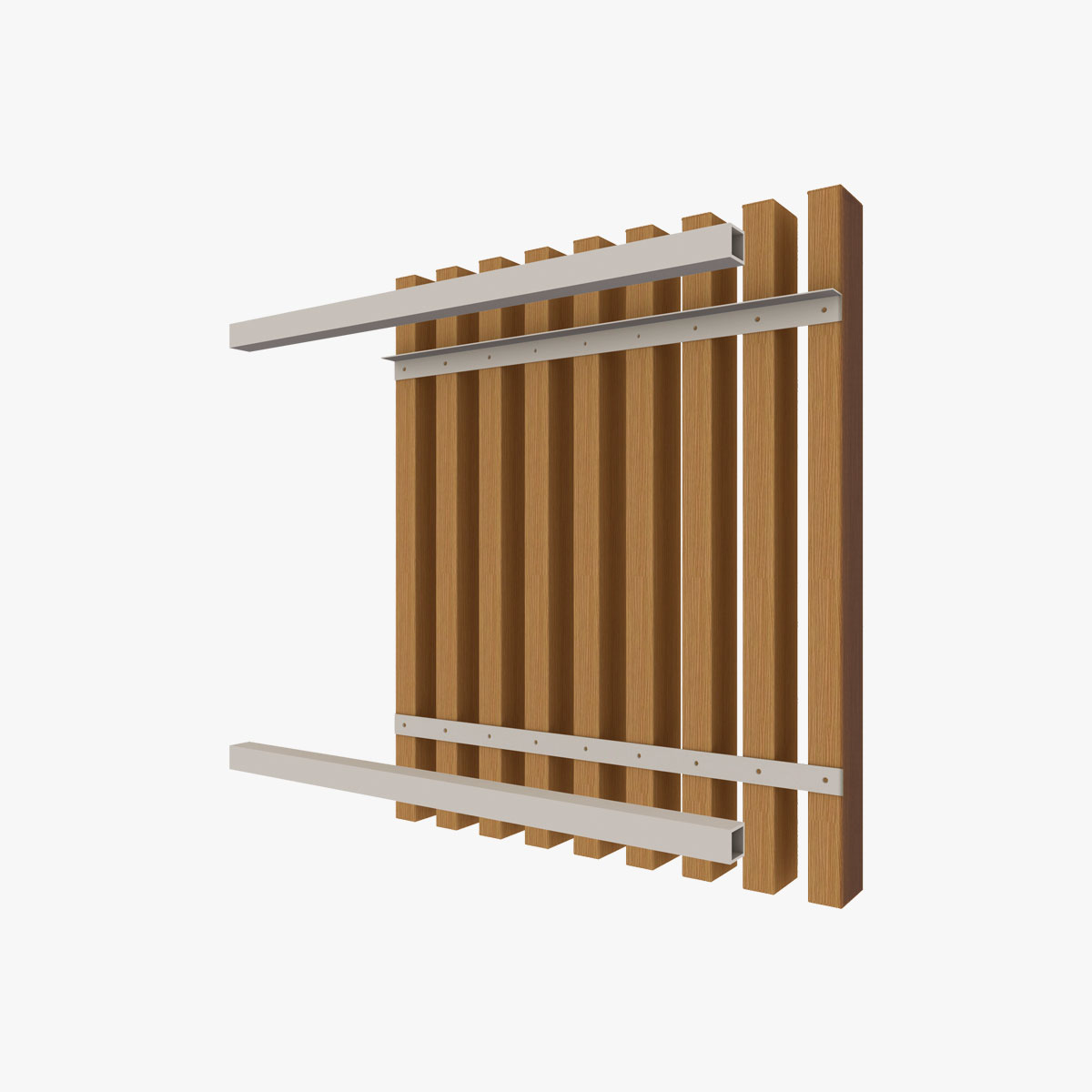Novowood is a composite material (WPC), 70% made of wood natural fibers and 30% made of Polyethylene. It can be used for products of different shapes and colors, still maintaining the elegance of wood and the advantages of a not completely natural material.
Sunshade
In this project, client need to define the external area with walls that let the light filter through and see the architecture in the rear glass with the creation of these sunshade panels.
The steel frame has been shaped and drilled with an inconstant pitch to increase the fatigue of the strips. The profiles used are the Infinity 60 model with an oversized stiffening core for a longer fixing span.
The chosen colour is wood, in contrast with the structure colour and able to give suggestion …
Read moreIn this project, client need to define the external area with walls that let the light filter through and see the architecture in the rear glass with the creation of these sunshade panels.
The steel frame has been shaped and drilled with an inconstant pitch to increase the fatigue of the strips. The profiles used are the Infinity 60 model with an oversized stiffening core for a longer fixing span.
The chosen colour is wood, in contrast with the structure colour and able to give suggestion to the users in the external area of this well-known restaurant in the province of Rovigo.
The choice fell on Novowood composite wood both for its versatility of use and for the incomparable durability in an external environment.
Read lessYou may also be interested in
Infinity 75 sunshade in the stunning setting of Corfu.
We supplied the materials for the creation of a stunning str…
Fratelli Moscone Winery: A Perfect Balance of Nature, Design, and Functionality
Three rows of vineyards welcome guests, and two majestic map…
Via Due Madonne
The district develops on the outskirts of Bologna, along the…
NOVOWOOD Skin Max Wood: private residence cladding in Ponteranica (BG)
For the exterior cladding of this private residence, the cho…
Seven Star Yacht Club
Novowood flies to China, together with the partner company &…
Beach Resort Venice
The resort of the famous Swiss chain Hapimag is located in t…
Marina Punta Verde
Where the river Tagliamento forms a loop for a last res…
Our 60x40 Sunshade for the Football Museum in Coverciano
The Coverciano Football Museum, the beating heart of Italian…
Isla Bonita
With the arrival of the great heat, we bring you into a real…
Frequently asked questions
Novowood has all the qualities of wood, but not its defects: it is long-lasting, stable and it does not warp, it has no splinters and does not lose color, it is sun, ice and rain resistant.
Novowood’s polymeric component allows it to better resist the deterioration due to the sea climate and salty water. Furthermore, it works as a protective layer against the proliferation of fungus and mould.
Finally, the composite materials require no maintenance, painting and are 100% recyclable.
Novowood does not require any special maintenance, it is easy to clean thanks to the well-thought combination of wood and polyethylene, that restrain the growth of mould and fungus. It is suggested to clean it by using neutral floor detergents, and if using a high-pressure cleaner, it is necessary to keep the machine at least 30 cm away from the walking surface.
WPC decking is used in both residential and commercial contexts, including:
- Terraces and balconies of private homes
- Poolside areas and solariums for houses, hotels, and wellness centers
- Walkways and docks in beach resorts
- Pathways and relaxation areas in gardens and public parks
- Flooring for restaurants, bars, and outdoor venues
WPC sunshades are used in various contexts, including:
- Facades of residential and commercial buildings to improve energy efficiency
- Terraces and balconies to increase privacy and reduce solar radiation
- Hospitality structures such as hotels and resorts to create elegant and protected environments
- Commercial spaces and restaurants with outdoor areas for a modern and functional design
- Pergolas and verandas to ensure shading and protection from weather elements
Absolutely. WPC solar screens reduce indoor overheating, decreasing the need for air conditioning during summer months. This leads to significant energy savings, improves living comfort, and reduces environmental impact.
WPC cladding is ideal for:
- Facades of residential and commercial buildings, improving thermal and acoustic insulation
- Exterior cladding for hotels, resorts, and restaurants, with a modern and functional design
- Ventilated walls, enhancing a building’s energy efficiency
- Decorative panels for terraces and balconies, creating elegant and protected spaces
Yes, when used for ventilated facades, WPC reduces summer overheating and improves winter insulation. This helps lower energy consumption for heating and cooling, improving comfort inside the building.
Novowood offers several modular systems, including:
- Composite wood fences: Ideal for delimiting private or public spaces with a modern and durable design.
- Sliding sunshade panels: Mobile solutions to screen sunlight, ensure privacy, and enhance the aesthetics of terraces and balconies.
- Fixed and movable screens: For protection against sun and wind in residential and commercial settings.
Yes, Novowood offers tailor-made solutions with various finishes and colors that suit residential, commercial, and industrial settings.



